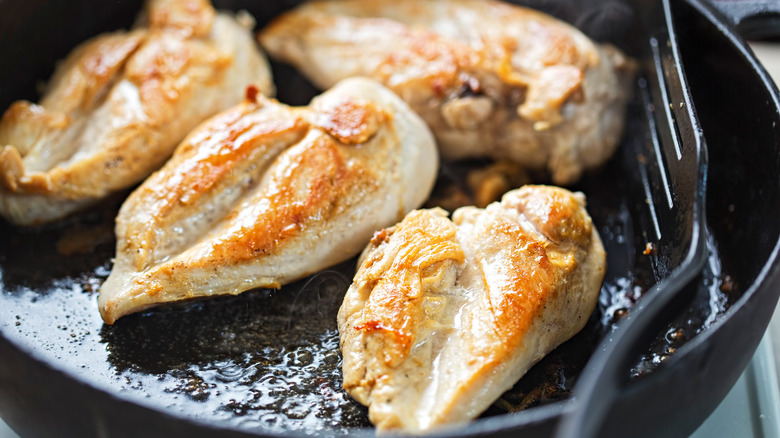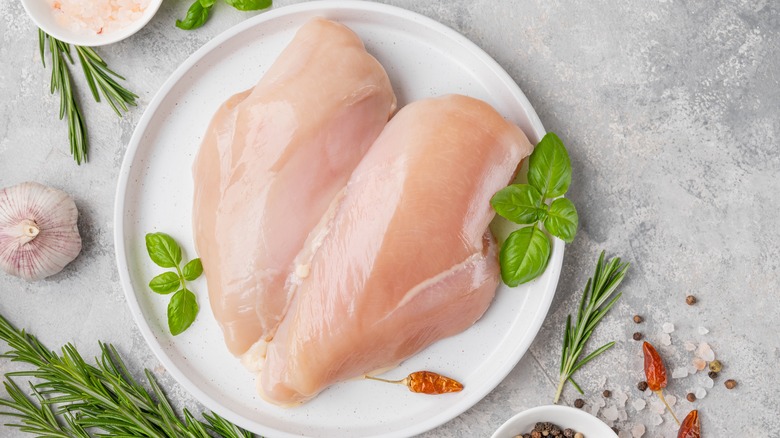The Steak Cooking Method You Should Try On Chicken
There have been countless articles and how-to guides exploring the many innovative ways to cook steak, from the sous vide method to frying to cooking from frozen. But one popular steak technique works just as well for poultry as beef — the reverse sear.
It's a fairly simple concept to understand, especially if you're familiar with traditional searing, which uses high heat to create a browned, well-cooked crust on a protein, "locking in" the juices and flavor. While some items like high-quality tuna and beef can be enjoyed rare after searing, most other meats are then baked, roasted, or otherwise cooked over a more gentle heat, allowing the interior to cook properly as well.
Reverse searing flips the script, first cooking your protein (in this case, chicken) in an oven set to under 300 degrees Fahrenheit. Some cooks like to wrap any baking dish or sheet used with foil to further trap moisture and speed up cooking. The chicken is cooked to roughly 145-150 degrees Fahrenheit and then removed from the oven and seared in a smoking-hot pan for a few minutes on each side to complete the cooking and produce the gorgeous browned crust that many diners are looking for. Remember, the internal temperature should always be 165 degrees or more for safe consumption.
Important advantages over other methods
Those accustomed to just tossing some chicken in a pan or on the grill may be skeptical of the extra time and work required. But for many, the results are more than worth the extra effort. Reverse searing allows the chicken to slowly reach a safe temperature, preserving the mouth-watering juices and moisture while also enjoying the ultra-flavorful crust and exterior texture. And compared to traditional searing, there's a lower risk of overcooking and more control over doneness.
Reverse searing also allows for multiple chances to impart flavor to your chicken, first by seasoning the cuts before they enter the oven and later with additional spices, butter, oil, or other options during the searing. After all, if you're like many, under-seasoning is one of the top mistakes you're making when preparing chicken. Keep this simple variation in mind and your chicken cooking may never be the same again.

